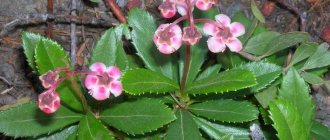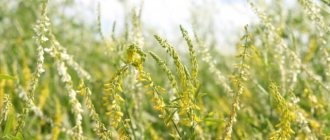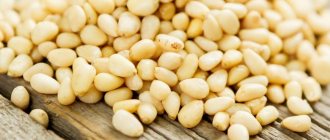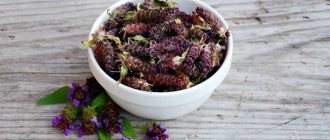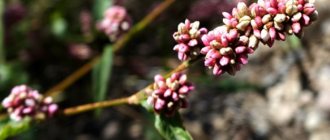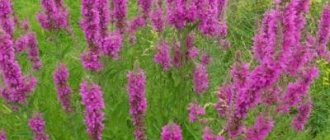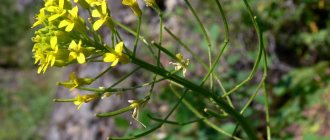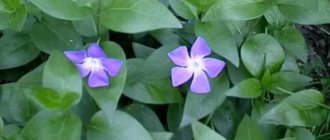Botanical description
Fragrant bison is a perennial herbaceous plant that has the following features from a botanical point of view:
- Long creeping rhizome. It penetrates vertically into the earth's thickness, resembling in appearance an ordinary cord or cable, from which narrow lateral roots extend in the form of nodules.
- Long smooth stems reaching a height of 80-100 centimeters.
- The leaves are flat, small, about 5-7 mm wide. At the roots they are long and pointed, and along the stem they are linear and shortened.
- The leaflets usually have a rough, velvet-like texture at the base.
- Inflorescences in the form of panicles up to 10 centimeters long. The spikelets on them are ovoid in shape, golden, light yellow in color.
The bison grass begins to bloom in June, and the ripening of the spikelets ends only at the end of August.
Zubrovka is a grass distributed throughout the world.
Zubrovka (grass): beneficial properties and contraindications. Where does bison grass grow?
Fragrant bison is a herbaceous plant that belongs to the cereal family. It is popularly called odorous bison, turovka, chapolot, lyadnik. The plant collection period is from late May to early June.
Zubrovka is a grass that is a perennial plant. Reaching a height of 70 cm, it has a long creeping rhizome and erect ascending stems. The leaves located on the stem have a short, flat shape. They are green below, naked, and gray-green above with scattered hairs. Bison flowers, collected in spikelets, form an oblong-oval panicle. Flowers in spikelets are collected in groups of 3; during flowering they look like a spreading panicle. The fruit of the plant is a grain of deep brown color and oblong shape, ripening in August.
Fragrant bison is a grass that prefers to grow on sandy, fresh and dry soils in pine forests, along clearings and roads, in forest clearings and glades. In addition, it can be found among bushes. Southern bison grass is common along the banks of rivers and lakes, where it grows throughout the summer. These plants differ both in their place of growth and in the structure of the panicle. In addition, they are the most favorite food of bison that live in North America, as well as bison in Belovezhskaya Pushcha.
Flower formula
The formula of a flower is its symbol that reflects its structure. It is written using Latin characters and numbers. Each plant has its own unique formula that sets it apart from other representatives.
The Zubrovka formula is as follows: O(2) + 2 TZ P1. This means that the herb contains:
- T3 – three stamens;
- P1 – one pestle;
- 2 T3 – stamens are arranged in two circles;
- O(2) – the perianth consists of two circles.
The formula tells what bison grass looks like and describes its appearance.
Classification
Fragrant bison grass (from the Latin “Hieróchloe odoráta”) belongs to the grass family, genus – Zubrovka. In the botanical literature one can find various descriptions of this plant, for example: glacier, fragrant spikelet, bitter grass, sacred grass, turovka, chapolot, bitterling, splashing grass.
Zubrovka is often confused with similar plants from this family, so a wide variety of names are attributed to it. That is why before collecting it is important to carefully study the features of the botanical description, as well as images and photos of the grass.
Zubrovka grass beneficial properties for anorexia nervosa
Zubrovka is a fragrant perennial herbaceous plant belonging to the grass family.
The bison is mainly found in spruce and pine forests, near roads, on river banks, and in mountainous areas.
The plant is not afraid of cold and loves sandy soil.
The composition of the upper parts of bison contains hydroxycinnamic acid anhydride, alkaloids and coumarin, which explains its tart, bitter taste and viscous odor.
The plant has : hemostatic, antibacterial, appetizing, soothing, vaso-strengthening effect. Infusion, tincture, and decoction are used to stimulate appetite and improve the functioning of the gastrointestinal tract - this particularly valuable quality of the herb is suitable for conditions such as anorexia nervosa.
In addition, the grass Zubrovka:
- has a restorative effect on hair and skin color;
- effective in preventing cancer;
- strengthens muscle tissue and vascular membranes;
- normalizes the nervous system;
- increases milk production in lactating women;
- has a positive effect on the state of the cardiovascular system.
Alcohol tincture is used for:
- problems with the stomach, intestines;
- infectious diseases;
- fever;
- tuberculosis;
- cold.
Preparation:
- Water infusion: pour 1 tablespoon of dried herb into 200 ml of boiling water. Leave with the lid closed for 30 minutes. Then strain the broth and squeeze it out. Take 10-15 minutes before meals, 1-2 tablespoons 3-4 times a day.
- Tincture: 0.5 liters of vodka or moonshine, two or three stems of grass, a teaspoon of sugar, a tablespoon of water and two tablespoons of lemon juice, mix and leave for 15 days with occasional shaking.
- Decoction: 2 tablespoons of dry crushed raw materials, pour 450 ml of clean water. Bring to a boil and keep on low heat for 8-10 minutes. Leave the broth for another 25 minutes, then strain. Take the finished product 50 ml 3 times a day.
Contraindications: pregnancy, neurosis and weak psyche, insomnia, individual intolerance, ulcers and serious intestinal problems.
- If you use bison decoctions on your own to enhance lactation, there is a risk of harming the baby’s health, since particles of the herb’s active substances may remain in breast milk. Official medicine does not use bison to make medicines, so prescribing self-treatment with decoctions or infusions of the plant is not always safe.
Chemical composition
Bison grass is often used in cosmetics, medicine, and in the production of alcoholic beverages. An infusion based on zubrowka is a famous Polish drink.
This is due to the chemical composition, which includes:
- vitamins of groups B, C, H, PP;
- potassium;
- calcium;
- magnesium;
- zinc;
- selenium;
- manganese;
- ascorbic acid;
- alkaloids.
Zubrovka infusion contains all the listed micro- and macroelements, therefore it is widely used in folk medicine.
The use of fragrant bison in folk medicine
Official medicine does not use bison as a medicinal raw material for the preparation of drugs. Zubrovka is used only in folk medicine.
In folk medicine, they mainly use infusion and tincture of bison. The plant tincture is effective for gastrointestinal disorders, as well as anorexia nervosa. The infusion is effective in relieving the pathological symptoms of pulmonary tuberculosis.
Zubrovka infusion
Option 1: 1 tbsp. dry fragrant bison grass is brewed with 1.5 cups of boiling water, left for an hour, then filtered. Drink the infusion one tablespoon 3-4 times a day, 20-30 minutes before meals.
Option 2: 20 g of dry bison grass is poured with a glass of boiling water, and then placed on low heat for 10 minutes. Next, the composition is infused, filtered, and drunk 2 tbsp. 3-4 times a day.
Zubrovka tincture
Important!
Long-term use of bison preparations is not recommended, since coumarin, which is part of the herb, has a toxic effect in large quantities and can adversely affect the liver. For the same reason, bison is contraindicated for pregnant women - coumarin is dangerous for the embryo and fetus.
The substances that make up bison have a positive effect on the condition of the skin and hair. Therefore, infusions and decoctions of the plant are used in the treatment of cracks and dry skin, and also as a hair tonic.
Also, decoctions and infusions of bison are recommended to stimulate lactation during breastfeeding.
Traditional healers believe that fragrant bison preparations have an antiseptic, diaphoretic and anti-tuberculosis effect.
Pharmacological properties
Zubrovka infusion is used only in folk medicine and promotes:
- relieving spasms and pain;
- normalization of hormonal levels;
- blood clotting;
- restoration of general tone, saturation of the body with nutrients;
- being a natural antioxidant, it helps slow down cell aging;
- improving the functioning of the central nervous system;
- secretion of digestive juice, improvement of the gastrointestinal tract.
The beneficial properties of bison are not recognized by supporters of traditional medicine, but they are widely used in homeopathy.
The above-ground part of the plant is used for medicinal purposes.
Composition and properties of sweet bison
It is coumarin that gives the bison a specific fragrant aroma. The leaves of the plant contain up to 0.2% of this substance.
Properties:
- hemostatic;
- emollient;
- hypotensive;
- hormonal;
- anti-leukodermic;
- antispasmodic.
Article on the topic: Beccaya shrub - useful properties, description
Action:
- prevents blood clotting;
- has a tonic and P-vitamin effect;
- promotes opening and resorption of abscesses;
- restores skin and hair pigmentation;
- has antitumor activity.
Ascorbic acid
Ascorbic acid is a natural antioxidant that is one of the most popular vitamins.
Action:
- participates in the synthesis of intracellular collagen;
- necessary to strengthen teeth, bones and walls of small vessels;
- participates in redox reactions;
- participates in the metabolism of carbohydrates, the formation of lipids and proteins;
- ensures iron absorption;
- necessary for cellular respiration.
Ferulic acid
One of the popular names for bison grass, bitterweed, was given because of the bitter taste of the herb, which is given to it by the bitterness contained in the plant.
Action:
- stimulate or increase appetite;
- stimulate the secretion of digestive juice in the stomach and intestines.
Contraindications and side effects
Fragrant bison grass is contraindicated in the following cases:
- individual intolerance, allergies;
- age up to 16 years;
- pregnancy, lactation period;
- presence of insomnia, depression;
- in the presence of acute diseases.
Even in a healthy person, taking bison tincture can cause side effects in the form of headaches, weakness, and general malaise.
The properties of bison will be useful only if the dosage is strictly observed and the decoctions are prepared correctly.
Contraindications for use
Decoctions, infusions and tinctures of aromatic bison are contraindicated:
- During pregnancy.
- Persons with depression and neuroses and neurosis-like conditions.
- For insomnia.
- Individual intolerance to plant components, because Allergic reactions may develop.
- Any acute diseases of the digestive system.
- Fragrant bison is not used as a medicinal raw material in official medicine for the preparation of medicines. Before starting treatment with this herb, you should consult a herbalist.
Harvesting technology
In order for bison grass to retain its beneficial properties and the maximum concentration of nutrients, it must be properly prepared. After collecting, the panicles-inflorescences must be cut off, the foliage and stems finely chopped and laid out on a flat surface until completely dry. This place must be reliably protected from exposure to direct sunlight and moisture.
After the bison grass has dried, it must be folded into a fabric bag and stored in a dark, cool place. In this form it can be stored for up to two years.
Zubrovka grass is also sold in pharmacies.
What does the fragrant bison look like and where does it grow?
We have already looked at what bison grass looks like and the beneficial properties of this product. The question remains - where is this plant found?
Zubrovka is a grass often found in countries with a temperate, mild climate. To grow, the plant requires a sufficient amount of moisture and sunlight. In Belarus, Russia, and Ukraine, bison grass is the main decoration of fields and forest edges.
It is also found in Siberia, the Caucasus, the Far East and Central Asian countries.
Description of the herb
Outwardly, the bison looks very simple, but is not particularly beautiful. The grass has a smooth and thin stem on which nodes form. Grows from 0.4 cm to 0.7 m in height. The leaves are flat and long. On the front side it is green, on the back it is gray. Its flowers have a brownish-golden hue and are collected in many inflorescences, which, in turn, are combined into lush spreading panicles.
The crop begins to bloom at the end of May, the flowering period is short, only until the beginning of June. The grass bears fruit with brown grains, which ripen in August. The seeds of the plant are very small.
There are about 30 species in the world, only 8 of them can be found in Russia. Only 3 types are often found.
Common types:
- fragrant - has a pleasant aroma, is widely used in alternative medicine;
- southern - popular in cooking;
- creeping.
Glacier grows near roads, in coniferous and deciduous forests, on river banks, in thickets and low mountains. The plant tolerates severe cold well, making it able to withstand any climatic conditions. In addition to Russia, it is found in the Caucasus, the Far East, and Siberia. In Ukraine, bison grass grows wherever there are forests. Moreover, the composition of the soil is not important for grass, but it still prefers sandy soil. In most cases it simply grows as a weed.
In a few words, the glacier can be described as:
- medicinal plant;
- flowering duration - from late spring to early summer;
- owner of a pleasant fragrant aroma;
- the taste is tart with a hint of bitterness;
- contains many vitamins and minerals.
The use of the herb is very beneficial for medicinal purposes if done correctly, as recommended by a doctor.
Varieties
There are three main types found in nature:
- The bison is fragrant, distinguished by a pleasant, delicate aroma.
- The steppe bison is widespread throughout Russia.
- Southern bison, which is quite rare, is widely valued in cooking and the food industry.
Steppe bison
All types contain approximately the same amount of nutrients, vitamins, and minerals, so they can be used for preparing infusions and decoctions.
Brands, types
If we talk about bison tincture, there are different brands and types. Particularly popular are:
- “Zubrivka” from Ukraine;
- "Stumbrine" from Lithuania;
- "Zubrovka" from the Czech Republic;
- "Grasovka" from Germany.
The American “Bizon Vodka”, known throughout the world, is especially popular.
Application
All varieties of bison grass are widely used in various sectors of human life: in medicine, cooking, and cosmetology. This is due to the fact that the properties of bison are varied and suitable for different directions. Let's take a closer look at the three main ones.
In medicine
Although bison herbs are not recognized by traditional medicine, they are widely popular among homeopaths and traditional healers. This is due to the high content of nutrients, vitamins and minerals.
Zubrovka herbs have an antiseptic, antiviral effect, actively fight inflammation, harmful bacteria, and have a general strengthening effect.
In cooking
Bison herbs are widely popular among French chefs. They add it to various drinks, dishes and desserts. Usually a fragrant variety is used for this, because it is the one that has a delicate, pleasant, unique aroma.
In Poland, a special drink “Zubrowka” is produced, based on this plant. It has been produced since the 17th century and is widely popular among local residents.
In addition, relatively recently, in 2005, a new unique sauce based on bison grass was registered.
In cosmetology
In cosmetology, oil based on the bison grass is widely used. The ether is used as a base for perfumes and as a flavoring agent for various creams, shampoos, masks, and balms.
In addition, bison contains a fairly large amount of antioxidants. Therefore, cosmetics based on this herb can reduce the number of visible wrinkles and make the skin smoother and more even.
Cosmetics based on this herb can reduce the number of visible wrinkles
How to drink Zubrovka and what to eat it with
The tincture based on bison grass is quite strong and contains a high concentration of useful substances. Exceeding the maximum permissible training may cause side effects.
For the zubrovka tincture to be beneficial, it must be drunk before meals in the amount of 1-2 teaspoons or added to tea at the rate of 1 teaspoon per 150 ml.
It is better to snack on bison meat or any cold, hearty snacks. The original Polish drink is recommended to be consumed with fish.
Sweet bison (Hierochloe odorata)
A perennial herbaceous plant belonging to the Poaceae family. It is widely used in the alcoholic beverage industry, bringing worldwide fame to the Polish alcoholic drink with the same name - “Zubrowka”, made on the basis of this herb.
Table of contents
Flower formula
In medicine
Bison grass is not included in the State Pharmacopoeia of the Russian Federation and is not used in official medicine, but it is successfully used in folk medicine due to its high content of useful minerals and vitamins as an appetite enhancer, as well as an antiseptic and anti-tuberculosis herbal remedy. Actively used for viral diseases, increasing sweating. The plant enhances digestive functions, stimulates appetite and helps in the treatment of gastrointestinal diseases. Zubrovka also restores pigmentation of the skin and hair, is an excellent hemostatic agent, strengthens muscles and the walls of blood vessels, improves metabolism, normalizes the functioning of the nervous system, and stabilizes the functioning of the heart.
Contraindications and side effects
A contraindication to taking zubrovka is individual intolerance due to the possible development of allergic reactions.
It is also contraindicated to use the herb for children, pregnant women, and lactating women (the substances of the plant remain in breast milk when using bison to enhance lactation). Depression, insomnia, neuroses and neurosis-like conditions are also contraindications.
You should not take zubrovka if a person suffers from any acute diseases of the digestive system.
Taking zubrovka preparations, even in a completely healthy person, can cause headaches (due to an overdose of coumarin, up to the appearance of migraines).
In cooking
In France, bison is added as a flavoring to soft drinks, candies, cigarettes, confectionery, sauces, fish marinades and canned food. This herb is a spice, but is used infrequently.
Already in the 17th century, tinctures and vodka with bison grass were known in Poland, and in 1926 the production of tincture with bison grass in a bottle was mastered. Now this Polish drink Zubrowka with a leaf of grass inside the bottle has become a national brand. And in Lithuania, an ancient honey drink known since the 16th century (Krupnik, or Krupnikas) is popular. It contains, along with many other spices, fragrant bison. Russian “Zubrovka”, Czech “Zubrovka”, German “Grasovka”, as well as American “Bison Vodka” - all these drinks also use zubrovka.
Article on the topic: High zamanikha - useful properties, description
In 2005, a sauce composition for traditional Polish dishes containing this plant was patented.
In cosmetology
Essential oil of bison is used as a raw material for perfumery and cosmetic products due to its specific smell of freshly cut hay.
In other areas
Essential oil of bison is used as a flavoring agent for smoking and snuff.
In agriculture, bison is added in small quantities to livestock feed to increase milk yield in cows. However, due to the presence of a special alkaloid in the plant, in large quantities the additive can be toxic to farm animals.
The fragrant bison has a very strong and developed root system. Therefore, it is often used as a fixative for sandy railway embankments and ravine slopes.
Classification
Fragrant bison (lat. Hierochloë odorata) is a species of perennial plants of the genus Hierochloë of the Poaceae family of the Poales order.
Botanical description
Sweet bison (Hierochloë odorata) is a perennial plant from the Poaceae family. The bison has a long vertical root in the form of a cord with thin, lateral roots starting from the nodules. The stems are erect, smooth, up to 80-100 cm high. The basal leaves are pointed, the stem leaves are shortened, linear-lanceolate in shape. Bison flowers are collected in spikelets, which are then formed into panicles. The spikelets are golden yellow, egg-shaped. The fruit is a grain.
Spreading
The European bison is common in North America, Asia, and Europe in temperate climate zones.
The fragrant bison is also found in the Caucasus, Siberia, the Far East and Central Asia (in the northern and mountainous regions). Most often, bison grows in meadows, forest clearings, bushes, along river banks and in the mountains.
In Ukraine, bison can only be found in forested areas.
Procurement of raw materials
The medicinal raw material for collection is considered to be the grass of the plant: stems, leaves and panicles, but the underground part and other parts of the bison are not collected. The period of grass harvesting is the time of flowering of the plant (from April to June), it is at this time that the content of a special substance in the plant - coumarin - is especially high. When re-harvesting the raw material after the grass has grown back, the coumarin content will be much lower. When harvesting, the stems with leaves should be no more than 50 cm long. Dry the raw materials by laying them out in the open air, in the shade, under a canopy.
Dried bison has one distinctive feature - the raw material is rolled into a tube when dried in the sun. All other herbs remain flat when treated similarly.
The shelf life of raw materials is 2 years. Industrially, bison can be harvested in the east of Ukraine, throughout Belarus and in central Russia.
Chemical composition
Zubrovka is rich in its chemical composition. It contains vitamins (B1, B2, B5, B6, B9, B12, C, H, PP), potassium, calcium, magnesium, zinc, copper, selenium, manganese, phosphorus, sodium, iron, ascorbic acid, ferulic acid, alkaloids, bitterness.
Zubrovka contains a special substance called coumarin in quite large quantities. It is this that gives the herb its specific aroma. Zubrovka contains hydroxycinnamic acid anhydride in the form of a glycoside.
Pharmacological properties
Fragrant bison is used only by traditional healers and has no use in official medicine.
The grass of bison is mainly used in the treatment of enterocolitis and colitis, gastritis, peptic ulcers of the stomach and duodenum (the bitterness of bison has a positive effect on appetite and the secretion of digestive juice in the stomach and intestines). Zubrovka tincture is useful for anorexia nervosa (refusal to eat) and gastrointestinal disorders.
Fragrant bison has an anti-inflammatory and bactericidal effect. An infusion of the leaves is useful in relieving fever and symptoms of pulmonary tuberculosis.
Zubrovka also helps with dry and cracked skin and brittle hair.
Externally, aqueous and alcoholic solutions of zubrovka are used to accelerate the healing of wounds and for fungal infections of the skin.
Use in folk medicine
Zubrovka at home
Every housewife can prepare her own infusion full of vitamins and nutrients.
In addition, you are allowed to add some ingredients at your discretion. The main thing is that they are combined with bison and enhance its beneficial properties. It goes well with cranberries and lingonberries, for example.
Classic Zubrowka recipe
The strength of the finished drink will be about 40%. It can be stored for up to five years in a dark place protected from ultraviolet radiation. The cooking procedure is as follows:
- Gather the necessary ingredients: 2 grams of dry grass, a liter of strong alcohol, a tablespoon of sugar and water.
- Mix sugar and water until a smooth syrup is obtained.
- Finely chop the herb and place it in the bottom of a glass jar.
- Fill it with sugar solution.
- Fill everything with a liter of strong alcohol.
The drink must brew for at least 20 days and ferment. After the time has passed, it is ready for use.
Home Zubrovka Zlata
This recipe is an improved version of the previous one. It contains a huge number of ingredients:
- half a liter of strong alcohol;
- half galangal root;
- half a tablespoon of oak bark;
- two prunes;
- zest of half a lemon;
- a quarter teaspoon of ground cinnamon;
- a pinch of cumin;
- a little vanillin;
- a tablespoon of sugar syrup.
All ingredients must be mixed and poured with alcohol. But don't add syrup right away. It is added after 14 days, when the spices have given off all their sweetness. You may not need additional sweetener. The drink will be completely ready in 16-20 days.
Recipes for medicinal cocktails
The bison plant has a wide range of beneficial properties. Has a positive effect on the body. It is often used to prepare medicinal cocktails.
Cocktail aperitif “Forbidden Fruit”
“Forbidden Fruit” consists of 30 ml of liqueur, 60 ml of sake, 60 grams of dried bison, one medium-sized kiwi, 20 ml of lemon juice.
All ingredients are thoroughly mixed together. It is advisable that the resulting cocktail brew for several hours.
Best served chilled with a few ice cubes.
Cocktail “Winter Dream”
The “Winter Dream” cocktail includes 40 ml of “Zubrovka” liqueur, 40 ml of liqueur, 20 ml of gin, 40 ml of apple juice, 20 ml of lemon juice, 10 ml of Grenadine syrup.
All ingredients are thoroughly mixed using a shaker or blender. The drink is served chilled or with the addition of a few ice cubes.
Cocktail “Wonderful Night”
“Wonderful Night” consists of 40 ml of Zubrovka tincture, 40 ml of gin, 60 ml of liqueur (you can take three different types), as well as 150 ml of apple juice. As in the previous version, all ingredients are mixed together until smooth and cooled.
